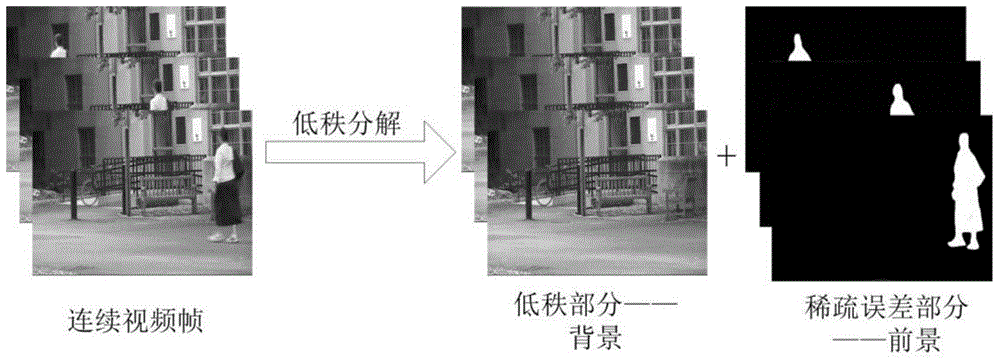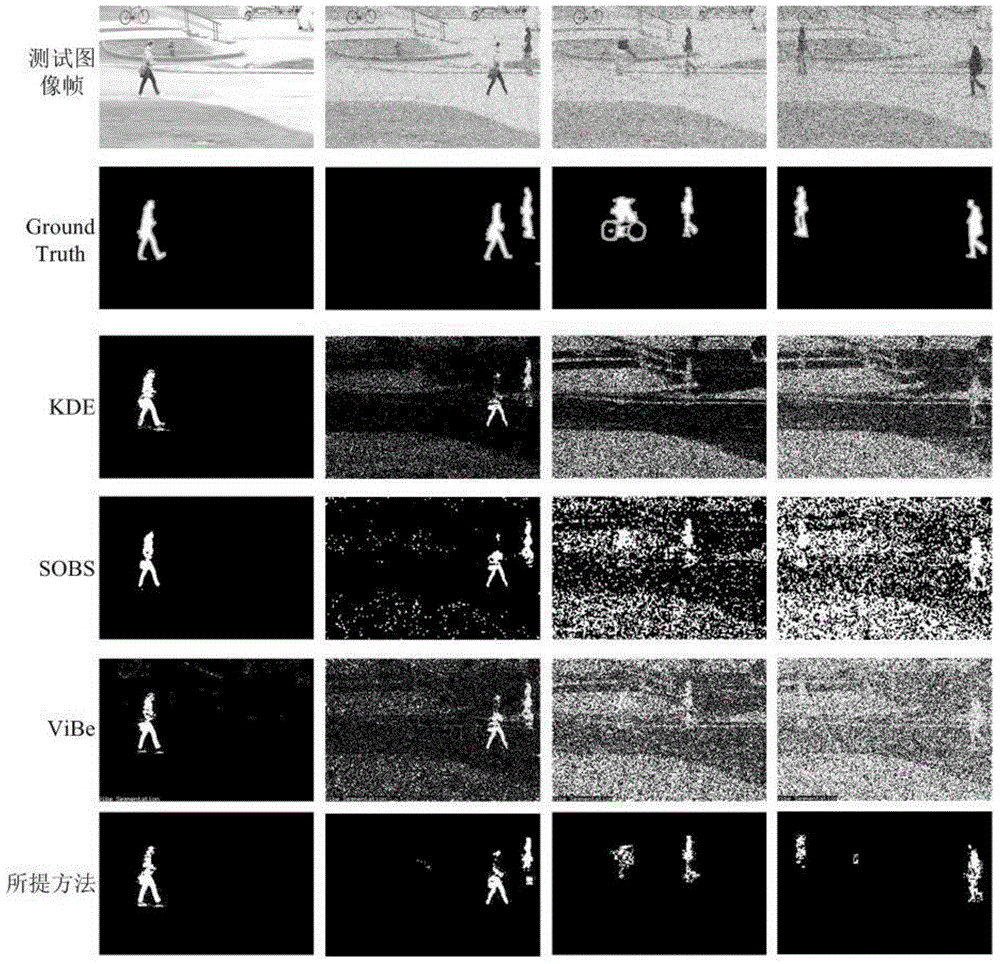Noise-resistant moving target detection algorithm based on low rank matrix
A moving target, low-rank matrix technology, applied in computing, image analysis, computer components and other directions, can solve problems such as impact
- Summary
- Abstract
- Description
- Claims
- Application Information
AI Technical Summary
Problems solved by technology
Method used
Image
Examples
Embodiment Construction
[0040] Below, the present invention will be further described in conjunction with the accompanying drawings and specific embodiments.
[0041] Such as figure 1 Shown is the overall flow chart of the proposed method of the present invention.
[0042] First, add different degrees and different types of noise to the 360×240 video captured by the surveillance camera, with a total of 300 frames, to simulate the noise in different environments, so that multiple different test image sets can be obtained. as attached image 3 As shown in the first row, in the same monitoring scene, different levels of noise are added. attached figure 2A schematic diagram of the method proposed in the present invention is shown in . After the obtained continuous video frames are decomposed into a low-rank matrix, the low-rank part and the sparse error part are obtained, that is, the required background and foreground.
[0043] Secondly, set the parameters in the iterative process, the size of the ...
PUM
 Login to View More
Login to View More Abstract
Description
Claims
Application Information
 Login to View More
Login to View More - R&D
- Intellectual Property
- Life Sciences
- Materials
- Tech Scout
- Unparalleled Data Quality
- Higher Quality Content
- 60% Fewer Hallucinations
Browse by: Latest US Patents, China's latest patents, Technical Efficacy Thesaurus, Application Domain, Technology Topic, Popular Technical Reports.
© 2025 PatSnap. All rights reserved.Legal|Privacy policy|Modern Slavery Act Transparency Statement|Sitemap|About US| Contact US: help@patsnap.com



